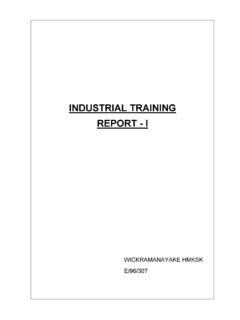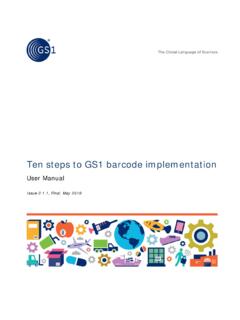Transcription of Currency - Bureau of Engraving and Printing
1 Currency NOTESBu r e au o f en g r av i n g a n d Pr i n t i n gCurrency OF PAPEr Currency AN OvErviEw .. 1 The Federal reserve sysTem .. 1 Currency Today .. 2 Federal reser ve Notes .. 2 PasT Currency Issues .. 2valuation of Currency .. 2 Demand Notes .. 2 United States Notes .. 3 Fractional Currency .. 3 Gold Certificates .. 4 The Gold Standard .. 4 Silver Certificates .. 4 Treasur y (or Coin) Notes .. 5 National Bank Notes .. 5 Federal reser ve Bank Notes .. 6 PaPer money noT Issued by The u.
2 S . GovernmenT .. 7 Celebrity Notes .. 7$3 Notes .. 7 Confederate Currency .. 7 Platinum Certificates .. 7iNTErESTiNG AND FUN FACTS ABOUT PAPEr Currency .. 9seleCTIon oF PorTraITs aPPearInG on u .s . Currency .. 9 PorTraITs and vIGneTTes used on u .s . Currency sInCe 1928 .. 10 PorTraITs and vIGneTTes oF Women on u .s . Currency .. 10aFrICan-amerICan sIGnaTures on u .s . Currency .. 10vIGneTTe on The baCk oF The $2 noTe .. 11vIGneTTe on The baCk oF The $5 noTe .. 11vIGneTTe on The baCk oF The $10 noTe.
3 12vIGneTTe on The baCk oF The $100 noTe .. 12orIGIn oF The $ sIGn .. 12 The Green In GreenbaCks .. 12naTIonal moTTo In God We TrusT .. 13 The GreaT seal oF The unITed sTaTes .. 13 Obverse Side of the Great Seal .. 13reverse Side of the Great Seal.. 13serIes year .. 13serIal numbers on Currency noTes .. 14 The unITed sTaTes Treasury seal on u .s . Currency .. 14sTar noTes .. 15 Web noTes .. 15barr noTes .. 15sPeCIal World War II Currency .. 16leGal Tender deFInITIon .. PAPER Currency AN OVERVIEWThe Federal reserve sysTemThe Federal Reserve System (commonly referred to as the Fed ) operates as the Nation s central bank and comprises a Board of Governors, 12 regional Federal Reserve banks located in major financial centers, and several thousand commercial banks that are members of the system.
4 One of the important functions of the Federal Reserve System is to ensure that adequate amounts of Currency and coin are in circulation. Depository institutions, such as commercial banks, savings banks, savings and loan associations, and credit unions, buy Currency from Federal Reserve banks to meet customer demand. The value of that cash is charged to their accounts and when the need for Currency and coin declines, these institutions return excess cash to a Federal Reserve bank, which in turn credits the appropriate establishment of the Federal Reserve System in 1913 was a culmination of past efforts to institute centralized banking operations in the United States.
5 As a result, the Federal Reserve Act of December 23, 1913, established the Federal Reserve System and authorized the Printing of Federal Reserve Notes. Since these notes were first issued in 1914, they have always been produced by the Bureau of Engraving and 12 Federal Reserve banks and their code letters are: 1. Boston A 7. Chicago G 2. New York B 8. St. Louis H 3. Philadelphia C 9. Minneapolis I 4. Cleveland D 10. Kansas City J 5. Richmond E 11. Dallas K 6. Atlanta F 12. San Francisco LCurrenCy TodayFederal Reser ve NotesToday, the only Currency notes issued are Federal Reserve Notes in denominations up to $100.
6 Cu r r e nC y not e s $ 00 Federal Reser ve Note, 9 4, back$50 Federal Reser ve Note, 2004, face The first issues (1914 and 1918) of Federal Reserve Notes were in denominations of $5, $10, $20, $50, $100, $500, $1,000, $5,000, and $10,000. These notes were larger in size than today s Federal Reserve Notes and featured either red or blue Treasury Seals. With the introduc-tion of Series 1928, the large-size notes were reduced to their present size and green Treasury Seals were overprinted on all denominations.
7 As with earlier issues, these notes were printed in denominations of $5 through $10,000. In 1963, $1 Federal Reserve Notes were introduced; $2 Federal Reserve Notes began circulating with Series appearance of Federal Reserve Notes remained largely unchanged for over 60 years. In the early 1990s, a security thread and microprinting were introduced to the existing design. All subsequent notes, except the $1 and $2 notes, include these features. Beginning with Series 1996, the design of the notes was changed to include additional security features, most notably a larger, off-center portrait, a watermark, and color-shifting advances in reproduction equipment and technology making counterfeiting of Currency easier and cheaper, Federal Reserve Notes were again redesigned.
8 Beginning with Series 2004, the most noticeable design difference is the introduction of subtle background color. This feature adds complexity to the note, making it more difficult to counterfeit. These new notes also incorporate familiar security features: the watermark, the security thread, and color-shifting Currency IssuesValuation of CurrencyThe Department of the Treasury redeems all genuine United States Currency at face value only and does not render opinions concerning the value of old, rare, or misprinted NotesDemand Notes represented the first general circulation of paper Currency notes by the Government.
9 Issued in 1861 and 1862 as a way to pay for goods and services related to Civil War costs, the notes were essentially Government IOUs and were called Demand Notes because they were payable on demand in coin at certain Treasury facilities. They were also popularly known as greenbacks because of the color ink used to print the by a private company, Demand Notes were sent to the Treasury in sheets of four notes each, where dozens of clerks and laborers signed, separated, and trimmed them by hand before issuance.
10 The notes did not have a Treasury Seal, nor were they signed by the actual Treasury 2 Bu r e au o f en g r av i n g a n d Pr i n t i n g$ 00 Federal Reser ve Note, 996, back$5 Demand Note, 86 , faceofficials listed on the note but rather by designated Treasury employees. Demand Notes were supplanted by United States Notes in States NotesUnited States Notes, also known as legal tender notes, were the first wide-spread United States paper Currency . Initially placed into circulation in 1862, they were deemed legal tender, payable for public and private debts.







